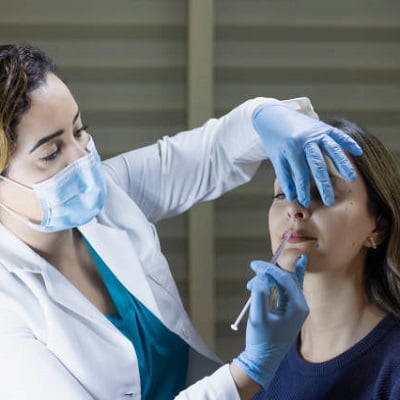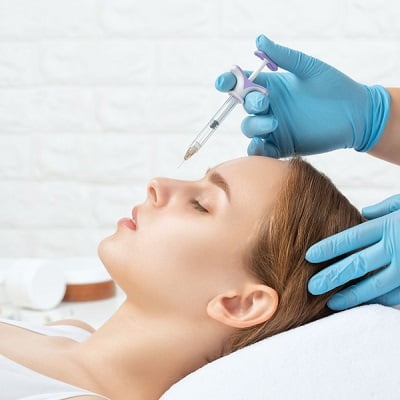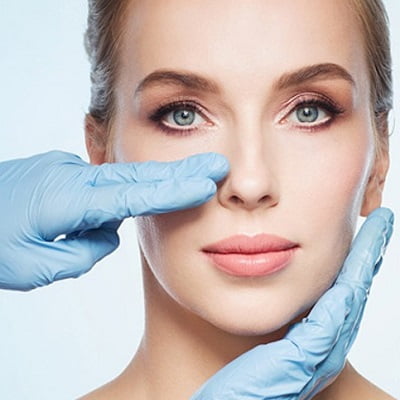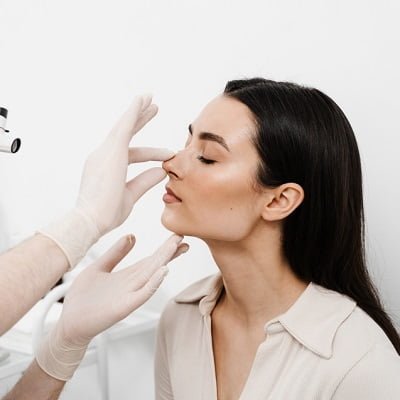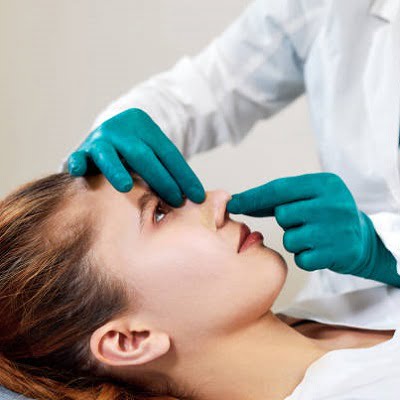Your nose is a key component of your face, affecting its appearance and symmetry. Many people want a perfectly shaped nose. Therefore, they consider rhinoplasty, a plastic surgery that improves nose aesthetics and balance. Are you also interested in rhinoplasty?
Choose the right nose shape by considering facial dimensions. Your nose should match your chin, cheekbones, forehead, and face structure. Head and neck surgeons specializing in facial plastic surgery can assess these dimensions. This will guarantee that your new nose matches your facial balance.
More feminine or masculine? What Should You Choose?
Individuals can choose a masculine or feminine nose shape. Some prefer a delicate nose, while others prefer a bolder one. Masculine noses are larger and have a wider tip than feminine ones. These traits strongly resemble gender norms and attractiveness standards. A surgeon specializing in facial plastic surgery can help you build a nose matching your gender. This doctor will learn your preferences.
Advantages of Digital Imaging for Nose Selection:
Digital imagery has revolutionized rhinoplasty consultations. It lets you visualize future results, ensuring a transparent and collaborative approach.
The main benefits of using digital imaging for nose selection are:
- It helps your nose to prepare for what to expect. You can then decide if the nose shape suits your face.
- This decreases uncertainty and ambiguity in nose shape selection. Knowing the possible outcomes allows you to make informed decisions and ensure the ultimate result is practical and meets your expectations.
- Digital imaging, which is recommended by the surgeon, lets you see an alternative nose and imagine how it will affect your appearance.
How To Determine The Most Suitable Nose Shape For Your Face Type?
Surgeons assess nose and face types that are attractive in men and women and establish their angles, dimensions, and proportions. Some of those;
- The nose’s length, tip projection,
- The nasal ridge-to-nasal tip projection ratio,
- The nose-forehead (nasofrontal) angle is the angle between the nose and upper lip (nasolabial).
- Nasal base width,
How to Know If Your Nose Is Attractive?
Following ratios and measures can give the nose an attractive appearance from the front, profile, and diagonally.
Reducing the nose too much is not cosmetically attractive. One element may need to be emphasized to create nasal harmony while another is reduced. Rasping down the nasal ridge raises the nose tip, creating an attractive nose-to-nasal tip ratio.
Another way to raise the nasal ridge is to fill a significantly depressed nasal root. Determining which potential modifications are best for the patient requires considerable skill and artistic insight.
Male and female noses differ; thus, rhinoplasty should consider these—another key consideration during the procedure. For instance, a concave, upturned nose will reduce a man’s masculinity and make him more feminine.
Why do Different Nose Shapes Matter?
It’s important to remember that no nose form suits everyone, regardless of gender. A small, concave, retrousse nose will look unnatural on a woman’s face with solid facial angles, cheekbones, and chin contours. A nose slightly curved upwards and sturdy, with a straight nasal ridge and an unexaggerated nasolabial (nose-upper lip) angle, will look better with this face.
From the front, you can see numerous facial features that identify each face. These include the height of the upper, middle, and lower face, the forehead width, the line that passes through the cheekbones, their protrusion, the prominence of the lower jaw corners, the shape of the lower jawline, and the size of the lower jaw tip.
Some of the most common facial types are:
- Face of diamond
- An oval’s face
- A round face
- A heart-shaped face with a square face.
- Like a rectangle
Who can get nose reshaping surgery?
Candidates must meet eligibility standards before surgery. Nose surgery is suitable for everyone with multiple nose issues. In any case, eligible candidates should consider the following:
- Applicants must be 20 or older.
- People are born with abnormal noses.
- If you have trouble breathing and other issues.
- For nose reshaping and relocation.
- aligning the abnormal nose.
- The candidate must be mentally and physically fit.
- It suits facial cosmetic surgery patients.
- To remove the dorsal hump.
- Prospective candidates under 18 are not eligible for the program since plastic surgeons suggest waiting until they mature.
Rhinoplasty Cost in Islamabad:
Usually, rhinoplasty in Islamabad costs between PKR 145,000 to PKR 400,000. It is a delicate treatment that cannot be performed by untrained surgeons, so don’t waste your money on them. When considering nose surgery, the following factors can affect cost:
- Professional plastic surgery cost.
- Clinic reputation and location.
- Costs for anesthesia.
- Nose surgery technique.
- Other clinical costs exist.
Contact Us for an Appointment!
Thus, SKN Cosmetic Surgery in Islamabad offers Rhinoplasty, or nose surgery, to adjust your nose to its perfect form and position. Due to their significant knowledge, our plastic surgeons can provide outstanding procedures and outcomes that meet your expectations without causing serious difficulties. Thus, visit us to get your desired facial appearance.



